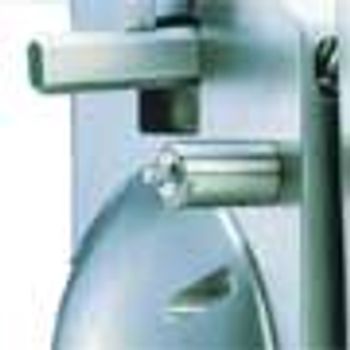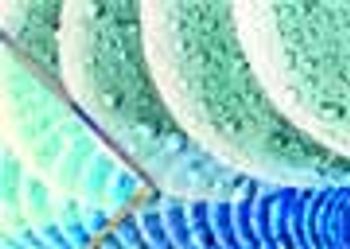
The author brings attention to the connectivity problems among various data-gathering systems and discusses the drivers and benefits of change, including PAT.

The author brings attention to the connectivity problems among various data-gathering systems and discusses the drivers and benefits of change, including PAT.

This article outlines the key concepts that define process analytical technology and emphasizes the relevant theory and applications of chemometrics.

The aim of this study was to validate the automated clean-in-place (CIP) system installed on a capsule filling machine to determine its ability to adequately eliminate contaminants. The results obtained from the proposed cleaning validation trial showed that all the soluble tracer was removed after the washing procedure. At the end of the CIP procedure, the discharged water had the same pH, phosphate content and total organic content as the supplied water. Lack of cross-contamination in the product was also demonstrated and a recovery trial highlighted the complete elimination of the tracer from the machine.

Determining whether a data point is an "outlier" - a result that does not fit, is too high or too low, is extreme or discordant - is difficult when using small data sets, such as the data from three, four or five conformance runs. In this article, the authors demonstrate that the Weisberg t-test is a powerful tool for detecting deviations in small data sets.

FDA and manufacturers seek to curb drug counterfeiting while legislators consider liberalizing drug importing policies to cut pharmaceutical costs.

Pharmaceutical science & technology news.

Single-use filtration technology is becoming increasingly popular as manufacturers seek to cut costs and minimize processing times.

New blister packaging offers patient compliance aids, child-resistant mechanisms, and space to include brand information.

Improving product quality and lowering costs are the key factors behind the decisions made in many industries. Ensuring product quality throughout the manufacturing process can be time-consuming, with materials and products 'quarantined' until test results are generated. Rapid testing by near-infrared (NIR) spectroscopy at all stages of the manufacturing process can reduce production time and provide assurances at each step of the process that product quality is being maintained.

Respirable drug delivery is becoming increasingly popular because it provides a non-invasive route with rapid drug uptake, not only for the treatment of respiratory complaints, but also for the systemic delivery of substances that cannot be delivered orally.

There can be little argument that packaging is at the forefront of the fight against counterfeit drugs, which currently costs the industry between 6-10% of the value of pharmaceutical sales. According to IMS Health, the figure is approximately $22 billion from global pharmaceutical sales of $364 billion. To set this in context, counterfeiting of all goods costs $200-400 billion annually, claims the Global Anti-Counterfeiting Group. According to the the US Pharmaceutical Manufacturers Association, it can take an average of $250 million and 10 years to legally develop and market a drug, but it is possible for a counterfeiter to 'reproduce' a product within a couple of months for as little as $250000.

Interphex provided pharmaceutical manufacturers an opportunity to view the latest packaging materials and machinery.

Isolator technology can be used in clinical product formulation and filling facilities to ensure environmental control and reduce contamination risk in aseptic processing.

New research has led to significant advances in formulations and inhalation systems for pulmonary delivery.

Various types of metal detectors on teh market today can be used to protect product quality.

The latest generation of packaging equipment boasts technologies surpassing those of its predecessors while offering ease in operation, maintenance, and integration.

Sterilizing grade filters are widely used in the biopharmaceutical industry and were once thought of as being perfect. However, these filters have experienced rapid developments and improvements during the last decade, which have resulted in enhanced thermal and mechanical resistance. Moreover, their performance levels have been raised, which has led to significant cost savings within production processes.

Already proven to be a useful tool in other industries, RFID may be the next innovative solution in product tracking and tracing.

Members of FDA, industry, and academia formed a working group within PQRI to openly discuss topics from a scientific perspective and provide formalized clarifications and recommendations to FDA to be considered and incorporated into FDA's draft guidance on aseptic processing.

The authors describe the solicitation of industry input for the guidance through a process that included a 2002 meeting of the Advisory Committe on Pharmaceutical Science and the subsequent formation of the PQRI Aseptic Processing Working Group.

Training for aseptic processing cleanrooms must be a dynamic process to meet job requirements and industry demands. The author discusses various approaches that may be taken to ensure a successful training session.

Modern tablet production facilities are faced with two increasingly important, yet contradictory, demands - being able to handle more potent drugs and, at the same time, reduce costs. Additionally, batch sizes must become smaller and production planning more flexible. Until recently, these issues could only be dealt with individually and not as a whole; however, the exchangeable functional module (EFM) may provide a solution to this problem, as this article describes.

This article is intended to keep readers informed about the developments concerning the local language requirements for European Union member countries. The first part deals with the reasons why these language requirements are about to become more difficult to meet and the second part, based on recent application knowledge, offers some potential solutions.

The authors provide a combined source of density data and show that denity can be used as an equipment-independent sclaing parameter in the manufacture of common pharmaceutical solids.

Oral dosage forms are the most popular way of taking medication, despite having some disadvantages compared with other methods. One such disadvantage is the risk of slow absorption of the active pharmaceutical ingredient (API), which can be overcome by administering the drug in liquid form and, therefore, possibly allowing the use of a lower dosage.